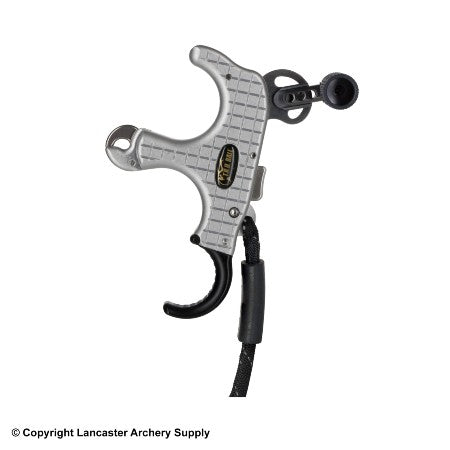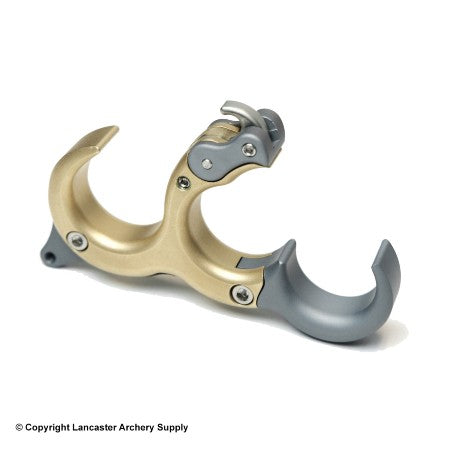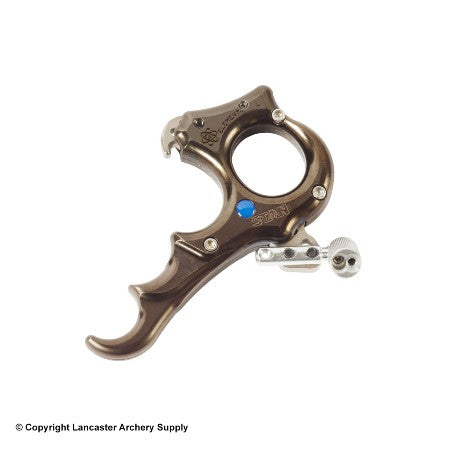Using a mechanical release aid to draw and shoot a compound bow is critical to consistent shooting. Look at a full selection of releases in a pro shop and you’re going to see a variety of styles. What’s the difference? And what’s right for me?
There are four main types of mechanical releases today. Let’s look at each type and what they’re commonly used for.
INDEX FINGER
Arguably the most popular release style on the market today is the index finger release. It’s like a gun trigger for your bow, since it’s activated by squeezing a trigger with your index finger.

Index finger releases typically are attached to wrist straps that assist the archer in drawing the bow. The weight of the bowstring is held by your entire arm, as compared to other releases held in your hand.
These are great releases for bowhunters and recreational and target archers who want the most control of when the bowstring is released. Bowhunters especially like them because, once they strap the release to their wrist, it’s always at the ready when the moment of truth arrives.

On the negative side, these releases are the easiest to anticipate, which can lead to flinching at the shot. Rather than slowly squeeze through a shot by pulling back with the release arm, archers will simply slam their index finger on the trigger when they want the release to fire.
When using an index finger release, try hooking your finger around the trigger and pull back with your whole arm to activate the release. This helps reduce anticipation.
THUMB BUTTON
The other most common release with a defined trigger is the thumb button. This is a release you hold in your hand, which has a trigger activated by your thumb. Thumb buttons are very commonly used by bowhunters and by target archers.

With a thumb button, it’s very easy to shoot it totally on command. That is, you squeeze your thumb on the trigger when you want it to fire. But they’re also easy to shoot by surprise.
The surprise shot eliminates flinching caused by anticipation, because the archer doesn’t know exactly when the release will fire. You simply keep pulling back on the string with your hand locked in place on the release. Keep aiming and the release fires when enough pressure has been put on the trigger by your continued pull.

You can find thumb button releases that you use with two fingers on the release, three fingers and four fingers.
HINGE or BACK TENSION
Hinge releases often are also called back-tension releases, because a common way to activate them is to use your back muscles to push your shoulder blades together, which drives your bow arm away from your release arm. When your arms expand, the head on a hinge release connected to the bowstring will rotate. That rotation releases the string hook and the bow fires.

Hinge releases are a favorite among target archers, and some bowhunters use them. These releases allow for a smooth, continuous-pull shot process that ends in a surprise shot. There is no trigger, so getting them to fire on command is much more difficult that index-finger or thumb button releases.

There is a steeper learning curve using a hinge than with trigger releases. Archers have to learn how to draw the bow without rotating the head of the release, causing it to fire prematurely.

TENSION ACTIVATED
Tension-activated releases are the true “back-tension” releases because the only way they fire is by coming to full draw and then continuing to pull. When the tension increases to a certain level, the release fires. Most of these are hand-held releases, although a couple new wrist-strap versions have come on the market in recent years.

Archers set that firing tension to their specific bows. These releases have a safety that the archer holds to get past the peak draw weight. They are then set to fire at a weight above the bow’s holding weight. The idea is that the archer continues aiming once full draw is achieved, and then they’ll just keep pulling until the release fires.
There is no trigger on these releases, so they also produce surprise shots. These are commonly used by target archers for training, although some will use them in competition. They’re great for getting over target panic and for learning to expand through a shot. Very few bowhunters use them for hunting.











































